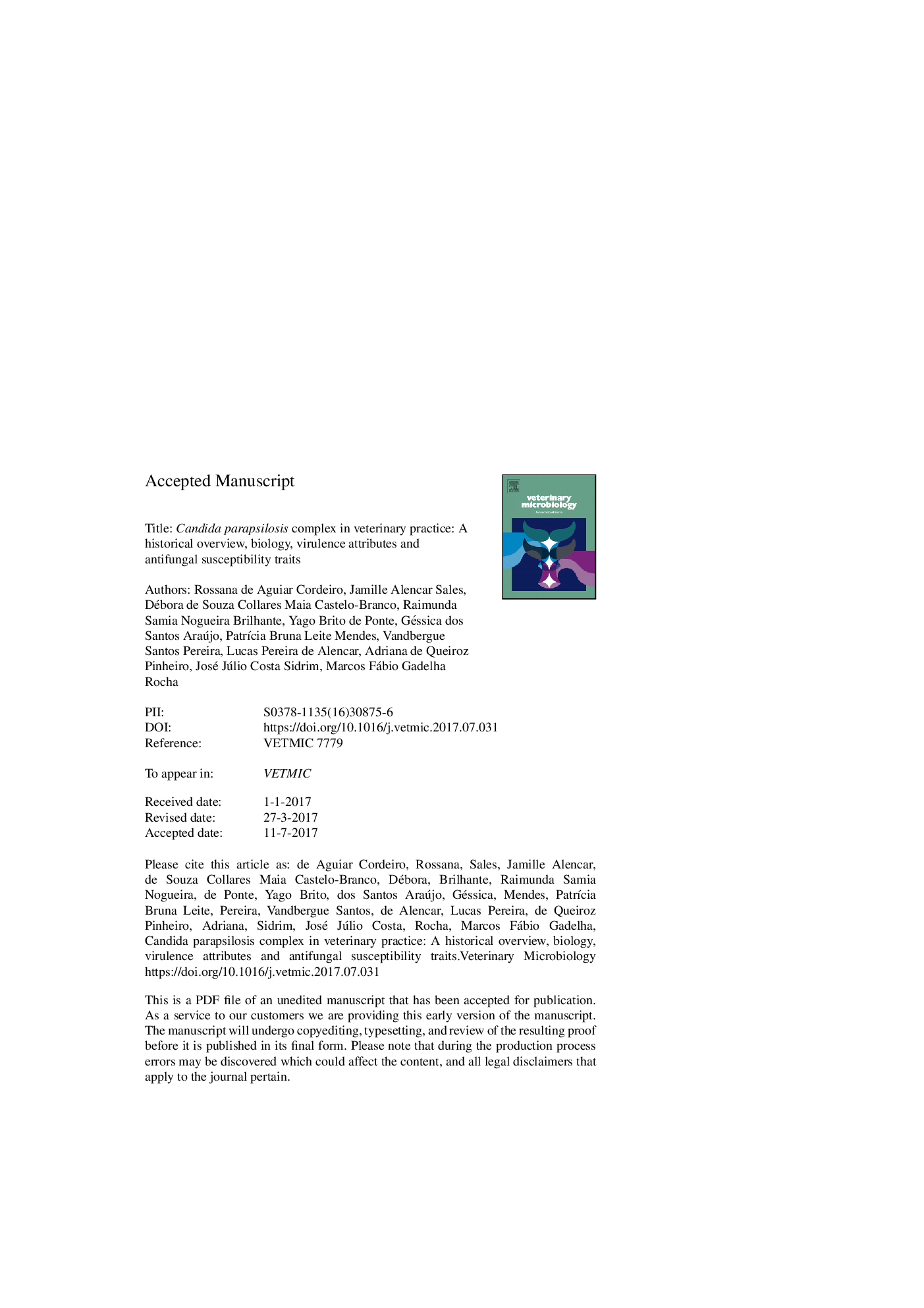| Article ID | Journal | Published Year | Pages | File Type |
|---|---|---|---|---|
| 8505689 | Veterinary Microbiology | 2017 | 43 Pages |
Abstract
The Candida genus is composed by yeast that commensally live as part of human and animal microbiota. In the last years, C. parapsilosis complex, composed by the cryptic species C. parapsilosis sensu stricto, C. orthopsilosis and C. metapsilosis, has been frequently implicated in human nosocomial infections in Europe and Latin America. In veterinary medicine, C. parapsilosis sensu lato infections have been reported in different animal species. Several putative virulence factors have been associated with the pathogenicity of this species complex, including biofilm formation and the production of proteases, phospholipases, lipases and other hydrolytic enzymes. Additionally, these species have developed antifungal resistance, especially to azole derivatives and echinocandins. Thus, considering the pathogenic potential of the C. parapsilosis species complex, along with the emergence of antifungal resistant strains, this review was designed to approach historical and biological aspects, microbiological features, virulence factors and antifungal susceptibility traits of C. parapsilosis complex from animals.
Related Topics
Life Sciences
Agricultural and Biological Sciences
Animal Science and Zoology
Authors
Rossana de Aguiar Cordeiro, Jamille Alencar Sales, Débora de Souza Collares Maia Castelo-Branco, Raimunda Samia Nogueira Brilhante, Yago Brito de Ponte, Géssica dos Santos Araújo, PatrÃcia Bruna Leite Mendes, Vandbergue Santos Pereira,
